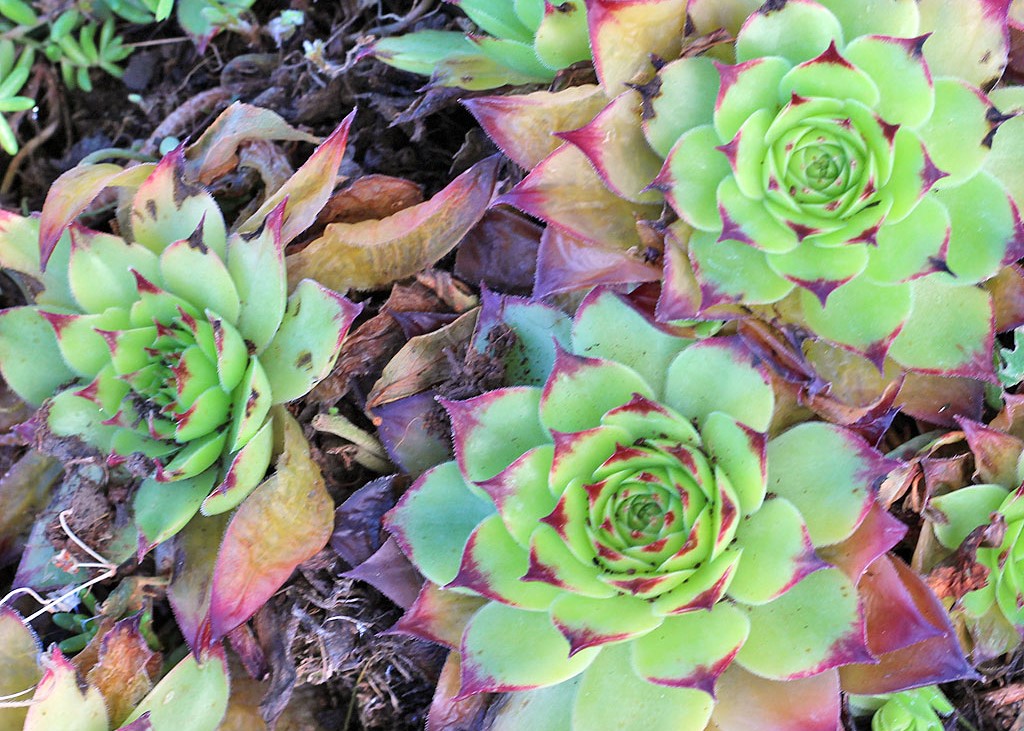How & When to Water Succulents (& When NOT to Water!)
Quick Read
- Water deeply but only water when the soil is completely dry AND the leaves feel less firm
- Let your plant guide your watering—strict watering schedules and moisture meters tend to lead to overwatering
- When in doubt...don't water yet!

CONTENTS |
Signs it's time to water succulents
Succulents thrive with a "soak and dry" watering cycle. That means you should only water when the soil and plant are dry.
You can see if your soil is completely dry by feeling for moisture down at the drainage hole. If it feels totally dry, check if the plant is showing signs of thirst. Signs of thirst are:
- Less firm, bendable leaves
- Slight wrinkling
- Tightening inward of the leaves

|
| Succulents ready for water |
Long droughts eventually lead to crispy, brown leaf tips that spread as the desiccation progresses. If this continues, the leaves will ultimately fall off.
At any point in this drying processes, all you need to do in response is water your succulent. Here's how!
How to water succulents
Many succulents are native to climates with very infrequent rain. But when it does rain, it pours! Mimicking this pattern in your own watering will help your succulent flourish.

Succulents need deep but very infrequent water, especially during the growing season and while establishing roots.
- Drench from above using a faucet, hose, or watering can
- Do not mist with a spray bottle (the only exception is for Air Plants)
- Fully saturate the soil. Water should run out the container's drainage hole
- Try to water the soil rather than the leaves; gently shake any droplets off the foliage
- Keep the succulent in a location with enough sun and airflow to dry the soil out in a few days
If your container does not have a drainage hole (not recommended), give about 1/4 the volume of the container when you do water. Only water again when the leaves show clear signs of drying.
When NOT to water succulents
Watering too frequently is one of the most common succulent mistakes. The real skill in taking care of succulents is knowing when to leave them dry. Do not water if:
- The soil feels at all damp
- The leaves feel perky and firm
- Any leaves feel mushy
- Any leaves are a translucent yellow or brown
- You just transplanted
Pro Tip: Succulents are much more tolerant of under-watering than over-watering. Additionally, an under-watered succulent is far easier to fix. So when in doubt, err on the side of less frequent watering.

|
| Watering too frequently leads to rot |
Watering frequency varies
Rigid watering schedules are not useful in the long run for succulents because there are so many variables that affect drying time. This includes:
- Soil: Heavy soils with more organic matter take longer to dry than gritty, well-draining soils
- Pot size: Large containers take longer to dry than small pots
- Pot material: Plastic and glazed ceramic pots take longer to dry than unglazed terracotta
- Humidity & precipitation: Succulents in wet climates take longer to dry than those in dry regions
- Season: Succulents need little to no water in their non-growing season. This is winter for most varieties, unless specifically noted
- Plant age: Young succulents need more frequent water to establish new roots. Mature succulents can tolerate longer droughts
Got more questions? Feel free to reach out to us at mountaincrestgardens.com/contact. We love talking plants!

 Play Video
Play Video